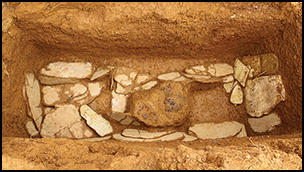Article contents
Food and ritual resources in hunter-gatherer societies: Canarium nuts in southern China and beyond
Published online by Cambridge University Press: 13 November 2019
Abstract

Archaeobotanical studies tend to concentrate on the evidence for specialised agricultural food production, with less attention directed towards the use of plant foods within hunter-gatherer contexts. Here, the authors present evidence for the exploitation of Canarium nuts from four late hunter-gatherer sites in southern China. Canarium nuts contributed to the inhabitants’ diets from as early as 9000 cal BP. They also identify new uses of Canarium, c. 4500–4400 cal BP, as ritual offerings in the context of the introduction of rice and millet farming. The results are examined in the context of Canarium use across the wider Asia-Pacific region.
- Type
- Research
- Information
- Copyright
- Copyright © Antiquity Publications Ltd, 2019
References
- 7
- Cited by




